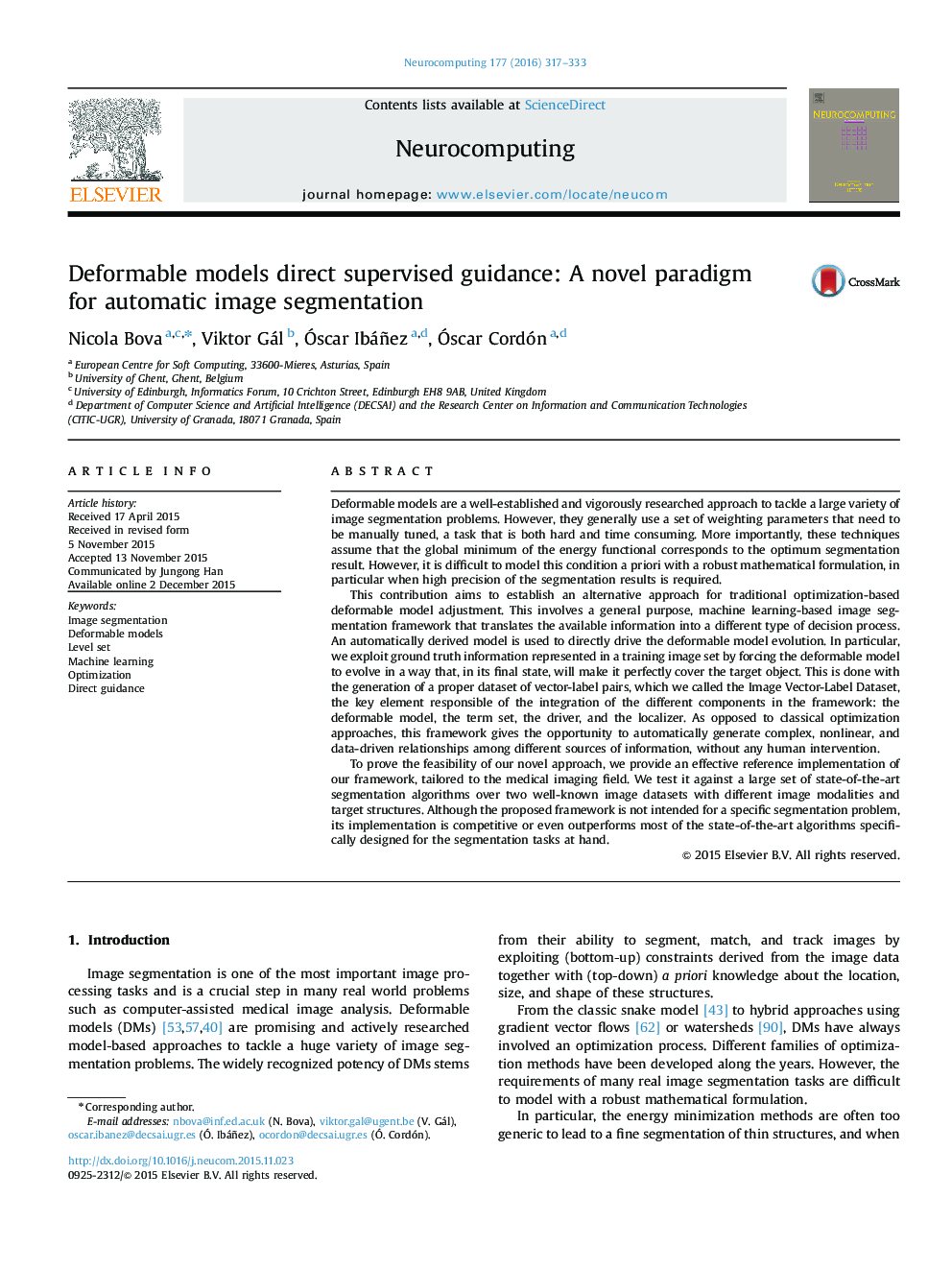| Article ID | Journal | Published Year | Pages | File Type |
|---|---|---|---|---|
| 408971 | Neurocomputing | 2016 | 17 Pages |
•Defining a priori the energy function guiding deformable models evolution is hard.•We show an alternative, fully automatic framework for deformable model adjustment.•The deformable model adjustment is directly guided by a machine learning method.•Learning is driven by the ground truth information provided in the training set.•Our framework is composed by four customizable parts plus an integration mechanism.
Deformable models are a well-established and vigorously researched approach to tackle a large variety of image segmentation problems. However, they generally use a set of weighting parameters that need to be manually tuned, a task that is both hard and time consuming. More importantly, these techniques assume that the global minimum of the energy functional corresponds to the optimum segmentation result. However, it is difficult to model this condition a priori with a robust mathematical formulation, in particular when high precision of the segmentation results is required.This contribution aims to establish an alternative approach for traditional optimization-based deformable model adjustment. This involves a general purpose, machine learning-based image segmentation framework that translates the available information into a different type of decision process. An automatically derived model is used to directly drive the deformable model evolution. In particular, we exploit ground truth information represented in a training image set by forcing the deformable model to evolve in a way that, in its final state, will make it perfectly cover the target object. This is done with the generation of a proper dataset of vector-label pairs, which we called the Image Vector-Label Dataset, the key element responsible of the integration of the different components in the framework: the deformable model, the term set, the driver, and the localizer. As opposed to classical optimization approaches, this framework gives the opportunity to automatically generate complex, nonlinear, and data-driven relationships among different sources of information, without any human intervention.To prove the feasibility of our novel approach, we provide an effective reference implementation of our framework, tailored to the medical imaging field. We test it against a large set of state-of-the-art segmentation algorithms over two well-known image datasets with different image modalities and target structures. Although the proposed framework is not intended for a specific segmentation problem, its implementation is competitive or even outperforms most of the state-of-the-art algorithms specifically designed for the segmentation tasks at hand.
